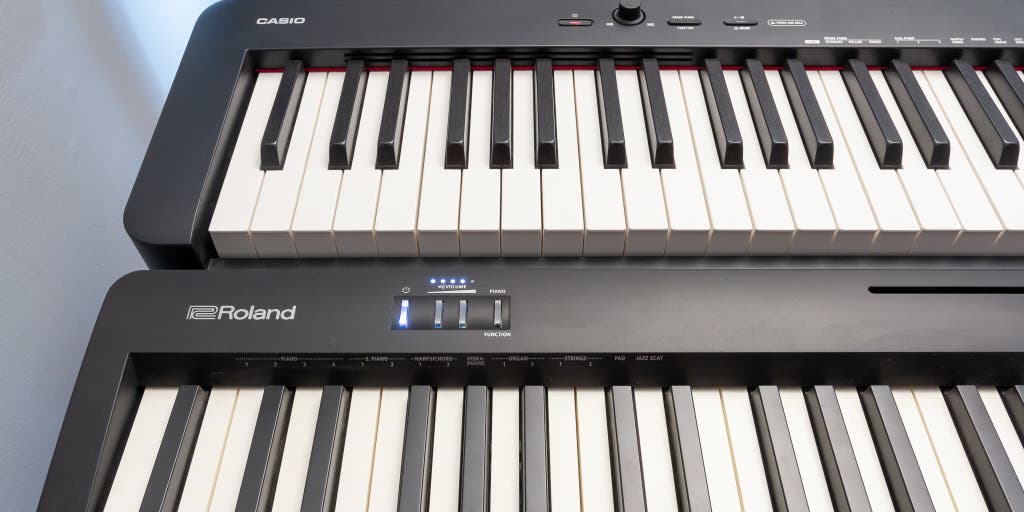1. Introduction
The piano is one of the oldest and most beloved instruments in the world. Whether you’re looking for a digital or an analog piano, there are many options available to suit your individual needs. This article will provide a comprehensive comparison between digital and analog pianos, including their history, advantages and disadvantages, types, prices, maintenance requirements, and popular brands.
2. History of Digital and Analog Pianos
Analog pianos have been around since the 1700s, when Bartolomeo Cristofori invented the first piano. Over the years, analog pianos have become increasingly popular due to their acoustic sound quality and ability to be tuned and maintained. Digital pianos were introduced in the 1980s as a more affordable alternative to analog pianos. They use electronic technology to create an authentic sound that is similar to that of an acoustic piano.
3. Advantages and Disadvantages of Digital Pianos
Digital pianos offer many advantages over traditional acoustic pianos, including portability, affordability, and versatility. They are also easier to maintain than acoustic pianos, as they do not require tuning or regular maintenance. Additionally, digital pianos often feature built-in recording capabilities and various sound effects that can be used to enhance your performance.
However, digital pianos also have some disadvantages compared to acoustic models. For example, they often lack the same level of touch sensitivity as acoustic models, which can make it difficult for some players to express themselves musically on a digital instrument. Additionally, digital pianos are often limited in terms of sound quality compared to acoustic models.
4. Advantages and Disadvantages of Analog Pianos
Analog pianos offer many advantages over digital models, including superior sound quality and touch sensitivity. Additionally, they are often more durable than digital models and require less maintenance over time than their digital counterparts. Acoustic models also provide players with a more authentic playing experience due to their unique characteristics such as resonance and sustain.
However, analog pianos also have some disadvantages compared to digital models. For example, they are typically more expensive than digital models and require regular tuning in order to maintain optimal performance levels. Additionally, they are much heavier and less portable than their digital counterparts which can make them difficult to transport from one location to another.
5. Types of Digital Pianos
Digital pianos come in a variety of shapes and sizes depending on your individual needs and preferences. There are upright digital pianos which are designed for home use; stage/portable digital pianos which are designed for live performances; keyboard workstations which feature built-in synthesizers; MIDI controllers which allow you to control other instruments; arranger keyboards which feature built-in accompaniment styles; and hybrid/digital grand pianos which combine the best features of both analog and digital instruments into one package.
6 Types of Analog Pianos
Analog pianos come in several different types as well including upright acoustic pianos; grand acoustic pianos; baby grand acoustic pianos; player grand acoustic pianos; console/studio/spinet acoustic pianos; electric keyboard/synthesizer/sampler keyboards; electronic organs; electronic harpsichords; electronic celestas; electronic vibraphones; electronic xylophones; electronic marimbas; electronic glockenspiels; electronic chimes; electronic drumsets; electronic drum machines; electric guitar amplifiers; electric bass amplifiers; electric guitar effects processors; electric bass effects processors; electric guitar pickups/pickup systems: electric bass pickups/pickup systems: electric guitar strings: electric bass strings: electric guitar tuners: electric bass tuners: electric guitar accessories: electric bass accessories: MIDI controllers/interfaces/sequencers/samplers: MIDI software programs: MIDI hardware interfaces: MIDI cables: MIDI keyboards/synths: MIDI drumsets: MIDI drum machines: MIDI guitars/basses: MIDI wind controllers: MIDI stringed instruments: MIDI percussion controllers: etc..
7 Price Range Comparison Between Digital And Analog Pianos
Digital piano prices range from around $200 for entry-level models up to $10 000+ for professional-grade instruments while analog piano prices range from around $1000 up to $100 000+ for concert grand models depending on size, features & brand name .
8 How To Choose The Right Piano For You
When choosing between a digital or an analog piano it is important to consider your budget , playing style , desired sound quality , portability needs , space constraints , maintenance requirements & any additional features you may want . It is also important to consider how long you plan on playing the instrument – if you plan on playing for many years then investing in a higher quality instrument may be worth it . Additionally , it is important to test out different models before making your purchase so that you can determine which type best suits your individual needs .
< h 2 > 9 Maintenance Requirements For Digital And Analog Pianos < / h 2 >
Digital pianos generally require very little maintenance beyond occasional cleaning & dusting while analog ones should be tuned at least twice per year & may require additional repairs depending on usage . Additionally , both types should be stored in a dry environment away from direct sunlight & extreme temperatures .
< h 2 > 10 Popular Brands For Digital And Analog Pianos < / h 2 >
Popular brands for both types include Yamaha , Roland , Kawai , Casio , Korg , Nord & Steinway . Each brand offers its own unique features & benefits so it is important to research each one before making your purchase .
< h 2 > 11 Conclusion < / h 2 >
In conclusion , both digital & analog piano offer unique benefits & drawbacks depending on your individual needs . It is important to research each type carefully before making your purchase so that you can choose the right instrument for you .

